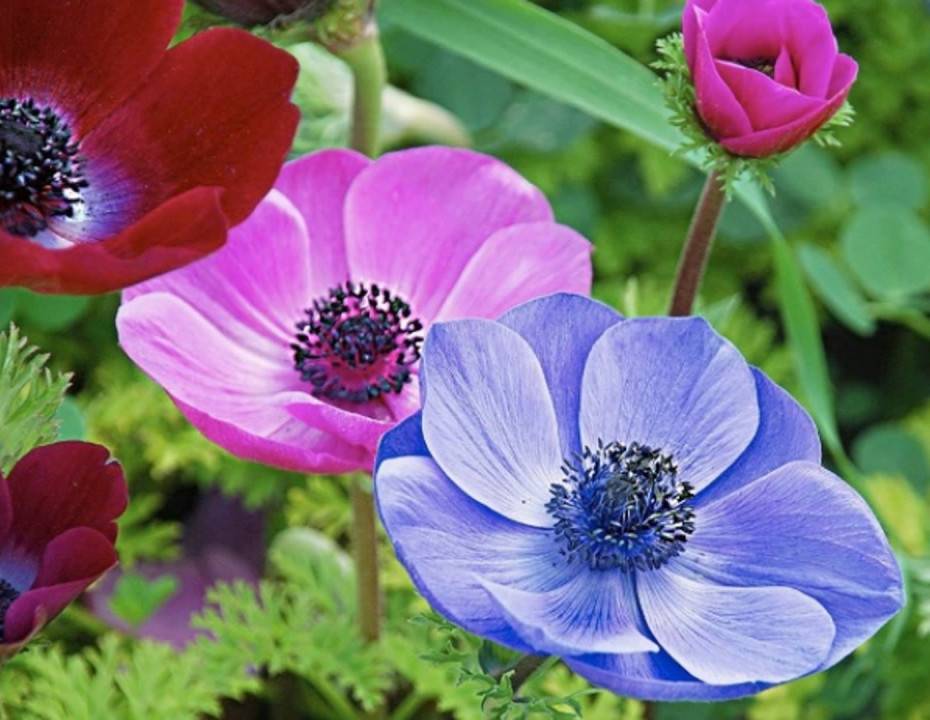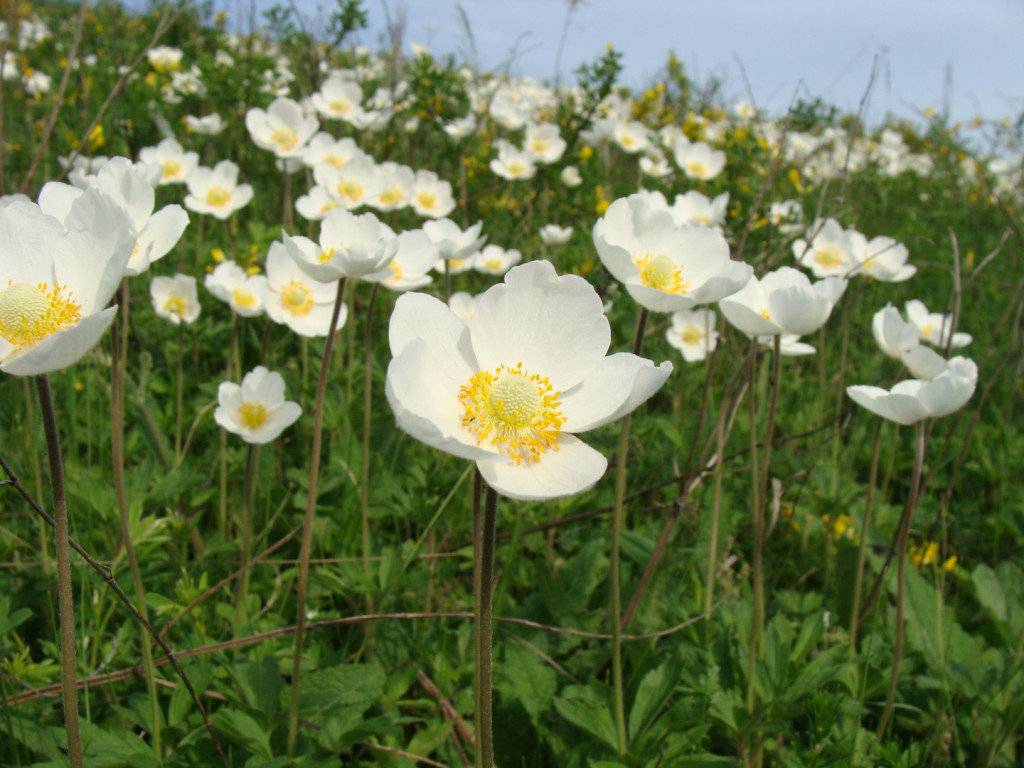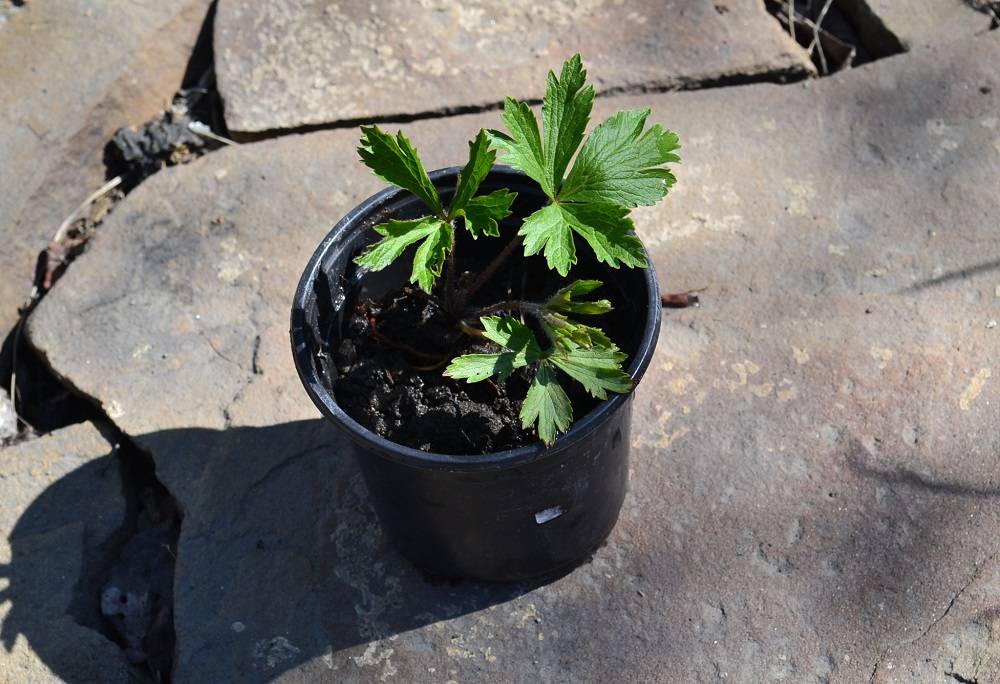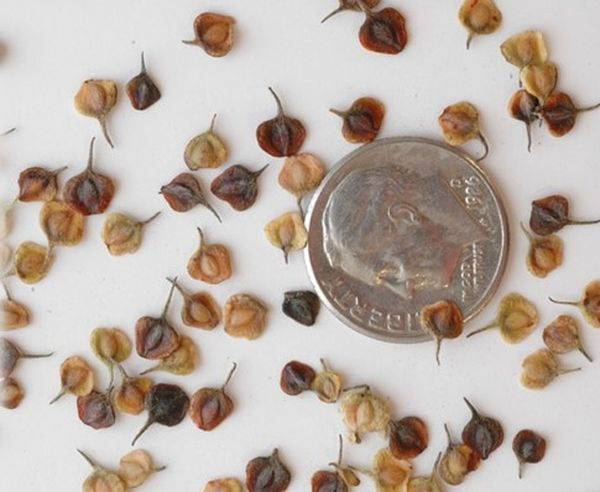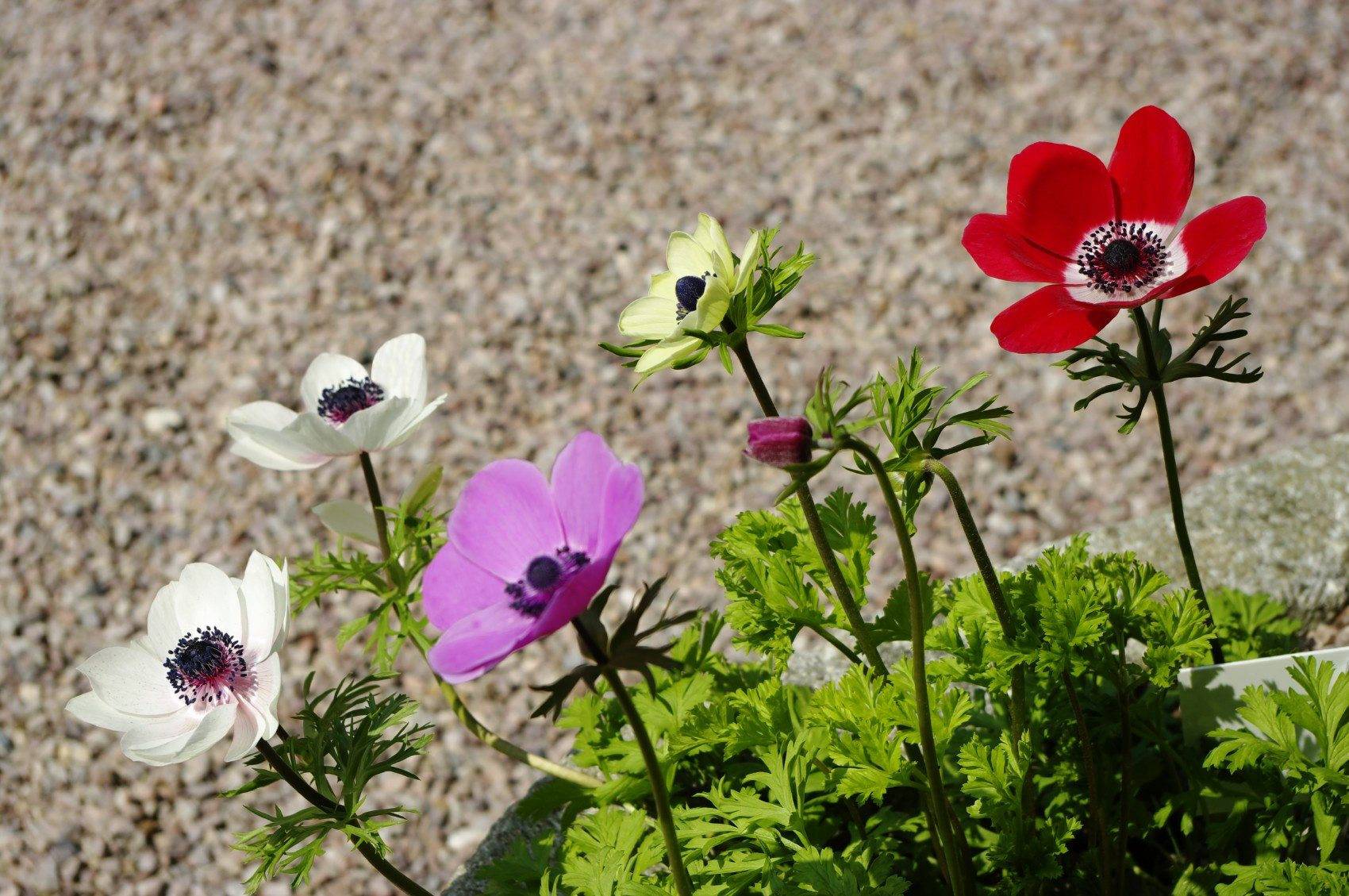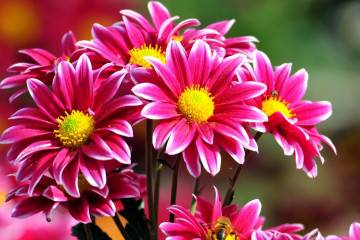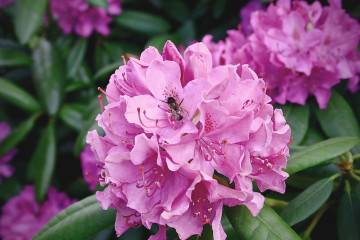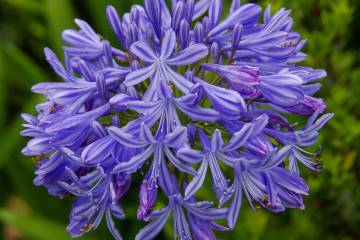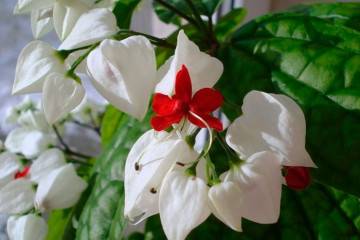Anemones - outdoor cultivation and care
Content:
This flower is often called the anemone for its high sensitivity to even the slightest breeze, because of which bright flowers, like butterflies, begin to flutter over the foliage. Knowing how to grow anemones can lead to a rare treasure in your garden.
Anemones: growing and care in the open field
The flower is grown throughout Russia, up to the subarctic belt. In the wild nature of Eurasia, including in the Moscow region, there are about 50 species of wild-growing anemones, from which the most beautiful cultivated varieties are obtained.
Anemones are plants that prefer rocky and well-lit areas. Distinguish between rhizome and bulbous varieties. The most unpretentious are rhizome, and bulbous are more demanding to care for. The flower prefers a loose, well-drained nutrient soil. Peat is mixed with deciduous soil, and sand is added for looseness. Most species prefer neutral soil.
Transplanting anemones outdoors after purchase
For an adult plant, transplanting in the active growth phase is very traumatic. In a new place, it takes root for a very long time and often dies. The optimal time for transplanting is early spring after the soil has thawed, when flowering has not yet begun.
How to plant anemones
Plants are planted with rhizomes or tubers. The rhizome, like the tuber, is planted in open ground only at rest, when its aboveground part is absent. It is enough to plant the rhizome in the selected area, directing the growth points upward.
Before planting the anemone, the tubers are pre-soaked for 2-3 hours in water so that they swell well. After that, growth points become distinguishable. Usually a healthy tuber has a flat top and a pointed bottom. They are planted either with growth points upward, or (if the tuber is of a non-standard shape) sideways.
When to plant anemones
Different species and varieties of anemone have very different flowering times. If desired, you can achieve continuous blooming from April to November. It is recommended to plant tuberous anemones in the first decade of April. If the spring is late in the region, then first the tubers are dripped in pots, watered, and planted on the flowerbed by transshipment in May, along with green shoots. The main thing is to avoid the threat of recurrent frosts.
What does anemone seedlings look like
There are three types of seedlings on sale:
- seedlings obtained from seeds;
- tubers planted in a container that gave green shoots;
- rhizomes are also in a shipping container with augmented green mass.
Which option to choose depends on the preferences of the buyer.It is believed that 2 and 3 have a higher chance of settling in a new place, since the main (underground) vegetative part is already quite large in size.
Choosing the best place
For many species, areas under the trees and shrubs are the best place to be. Their petals fade in the bright sun, and look brighter in the shade. However, there are species that prefer sunny areas - tender and crown anemone. If they are planted in the shade, the flowers will be small or not appear at all.
Good neighbors for anemones are bulbs of spring primroses, perennial poppy, buttercup. Annual flowers are planted at some distance, so as not to interfere with digging.
Step by step process on how to plant anemones
For both rhizome species and tubers, the following order will be correct:
- Dig the landing pits (holes) 15 cm deep and about 40 cm in diameter.
- At the bottom of each hole, a handful of wood ash and humus are poured.
- The tuber or rhizome is carefully laid and covered with loose soil.
- Tamp down slightly.
- Water immediately very abundantly.
In the future, it is necessary to ensure that there are no weeds on the site, which should be removed only by hand. The roots of the anemone are too close to the surface of the soil, so you should not use a hoe.
Reproduction
There are many ways to propagate anemone: by seeds, dividing a bush or tubers.
Propagation by cuttings
In the spring, while the anemones have not woken up, they are dug up to divide the rhizome into parts with buds. A viable segment is at least 5 cm long and has at least one bud. It is necessary to plant the cut in loose soil, laying it horizontally in the hole and deepening it by only 5 cm. A new plant will bloom only after 3 years. Again, it will be possible to divide it only at 4-5 years of age.
Growing from seeds
Seed germination is very low - no more than 25%. Moreover, the germination capacity of the seed does not exceed 1 year. To get strong shoots, all seeds must be stratified. To do this, they are mixed with peat or sand, watered and wait until all the seeds swell well. Then everything is mixed with the same amount of the substrate by volume and placed in the refrigerator.
The seeds will hatch in a few days. Following this, the seedlings are transferred along with the container to the street and placed in the snow or buried, sprinkling with straw or sawdust on top. In the spring, the seeds are transferred to the greenhouse, where they continue to look after them, regularly watering them.
You can naturally stratify the seeds by planting them in a container that overwinters in an open area, covered with straw or sawdust. In the spring, when the seedlings of the anemones hatch, at the stage of 2-3 leaves they dive and grow. An open ground transplant is carried out for 2 years.
Anemone care
During the entire growing season, watering is extremely important for the anemone. The soil should be moist, but not swampy, this is an important condition. With an excess of moisture, the tubers and rhizomes rot, and during drought they die. Therefore, a landing site is chosen on a hill with good drainage. To prevent the soil from drying out, mulch it with peat or dry leaves (the recommended layer thickness is 5 cm).
Watering mode
In the spring, when there is enough rainfall, you can water only once a week, when the soil dries well. In the summer, in the absence of rain, water is watered every day, and if it is very hot (above 30 ° C), then twice a day at sunrise and sunset.
Top dressing
When anemones are discharging their buds, they need organic feeding. An infusion of rotted manure or humate is suitable as it. In the fall, a complex mineral fertilizer is applied. Too frequent feeding can be detrimental to the flowers.
Features of care during flowering
Watering the anemones regularly is essential during forcing and blooming. If there is a drought, then watering is carried out twice a day. Additionally, the plants are fed with organic matter. If there is no purpose to collect seeds, then wilted flowers should be removed in time.
How to care for anemones during dormancy
As soon as the aboveground part of the plants dies off, the site must be mulched with peat or sawdust. This simple measure allows you to solve several problems at once:
- preventing weed growth;
- retention of moisture in the soil;
- soil enrichment with valuable organic matter;
- prevents root freezing in winter.
Preparing for winter
Tuberous anemones are dug up in the fall to prepare for wintering. The tubers are dried and then buried in a box with sand or peat. Store at a temperature of 4 ° C and a humidity of about 60%. Tubers overwinter outdoors only in regions where there is no frost in winter.
The rhizomes are left in the soil, but they must be insulated. To do this, a layer of mulch is increased 2-3 times, and a spandbond is pulled over it or spruce branches are laid out. The shelter is removed in early April.
Anemone: planting and care outdoors in the Urals
The Urals are characterized by short summers and winter frosts below −30 ° С. In such a climate, anemones must be dug up and stored in basements in winter in boxes of sand at a temperature of 4 ° C. The sand should be moistened once a month.
Landing in open ground is carried out when the threat of frost return has passed, usually at the end of May, beginning of June. After wilting of the aboveground part, the underground part is dug up to send it for wintering. This technology is preferable to the seed method of propagation, since it will take too long to wait for flowering from the seeds.
Possible difficulties in growing anemones
In addition to the fact that the rhizomes and tubers of anemone must be dug up every summer, and planted again in the spring, the plant requires:
- watering. Without it, anemones perish;
- top dressing twice a year: organic during flowering, mineral in the fall for non-dug varieties and in the spring before planting the rest;
- wintering flowers must be covered.
Withering of the aerial part ahead of time indicates a lack of nutrients. It is necessary to feed with phosphorus. Excess and lack of moisture are manifested by a sharp yellowing.
Why does not anemone bloom
Usually, the absence of flowers indicates that:
- the plant is too young. Grown from seeds bloom only in the third year;
- lack of nutrients. Need feeding;
- planting in the shade, although this variety needs bright light.
Growing anemones is a very interesting and exciting experience. Bright and delicate flowers are a long-awaited reward for those who decided to decorate their plot with a plant that is not the most common plant in flower beds.
